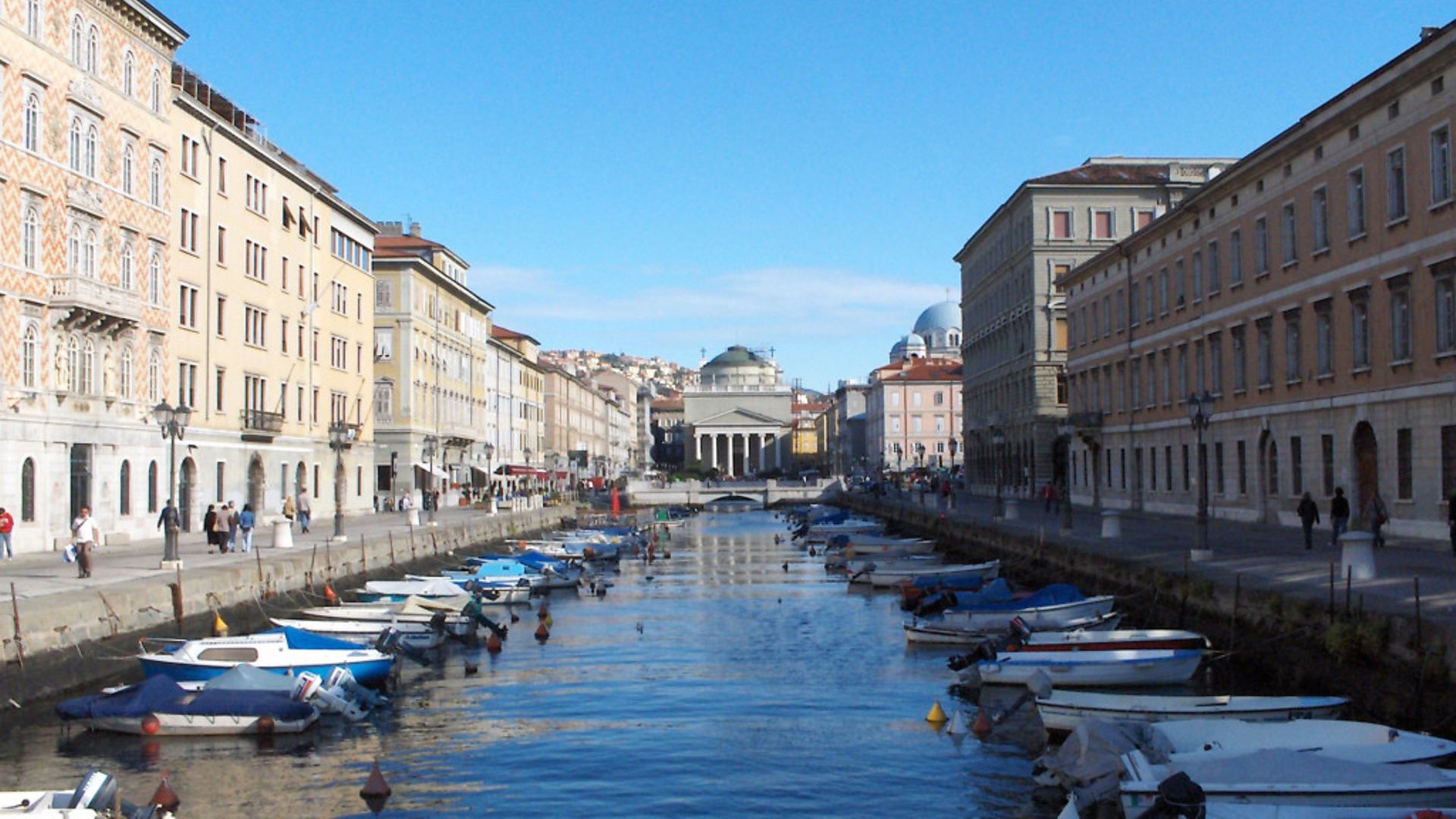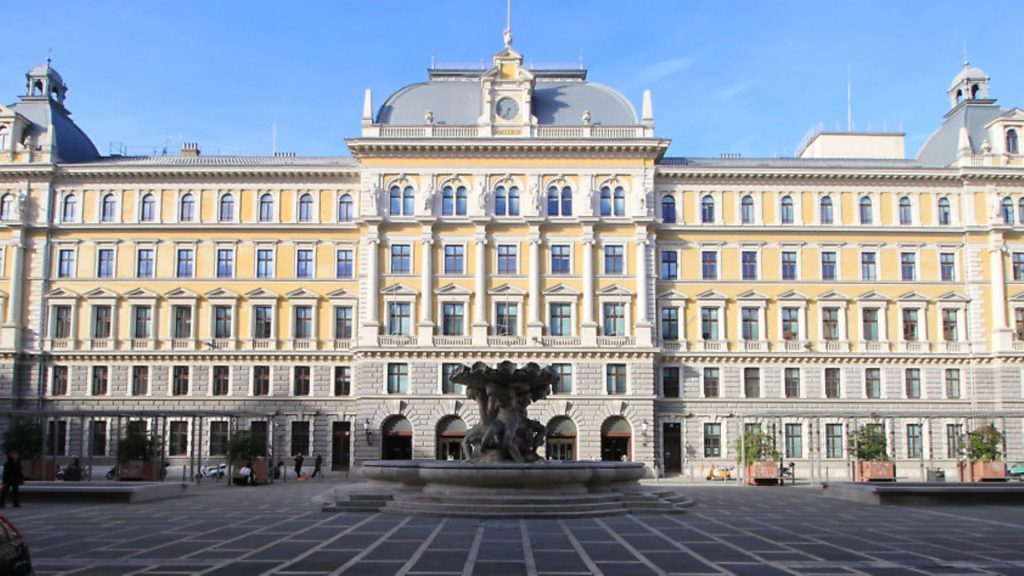
Trieste, the city which has survived centuries of seductive illusions.

The elusive concept of Mitteleuropa hovers with one foot in an extinct political reality and the other in the imagination of its beholder. Look for it on a map at any time in human history, and you will be disappointed. But for a make-believe realm it had a strikingly unambiguous end date.
Next year, it will be exactly a century since the Adriatic sea port of Trieste passed once and for all into Italian hands. The date was no coincidence; 1918 also saw the fall of the Habsburg dynasty, since 1521 the benevolent overlords of the by then fatally wounded Austro-Hungarian Empire. This confirmed a loss of relevance for Vienna’s maritime outpost, hastened by the cataclysm of the First World War.
Nowhere had the essence of Mitteleuropa been so potent as in Trieste. Even the Kaiserstadt itself, with its unspoken insistence on cultural assimilation, could not compare to the unconscious cosmopolitanism reflected in the docks and chambers of commerce of its most prized possession.
Like the so-called Danube monarchy itself, Trieste savoured tolerance, high culture and hybridity. Its position a matter of miles from the borders with Slovenia and Croatia, and proximity to the thriving and historically-independent Venice, ensured that there was nothing ersatz about the city’s pretensions.
Nor was the doomed empire’s association with the river that flows through its capital some accident of nomenclature. Instead it spoke eloquently of the confederation’s tremendous geographical scope, reaching all the way to the storied waterway’s mouth on the Black Sea. With the exception of southern Germany, where the Danube rises, the entirety of the territory it traverses once belonged to the Austrian Kaiser. It was these diffuse, yet curiously conjoined, dominions that eventually created that indefinable adjective mitteleuropäisch.
At their confluence was Trieste. Not itself bisected by the continent’s longest river, Kaiser Franz Joseph’s Urbs Fidelissima (Most Faithful City) nonetheless neatly encapsulated the many and varied regions that were. Frequented in equal measure by beggars and boyars from the other side of the Karst hills separating it from Slovenia, this Italian-speaking city could trace its Austrian identity back to the 14th century. To this day, its representative patchwork of languages attests to a history overrun with artistic and mercantile influences from every point of the compass.
When I stopped in Trieste to visit a friend two years ago, I found a city apparently suspended in time. Turning from the eerily vacant Piazza Unità, I strolled the length of the jetty without encountering a soul. Back in the square, the captivating ugliness of the Fountain of Four Continents held my gaze.
If I had known then what I know now, my disquiet would have been amplified. Mussolini held a rally in the square, piously renamed following the city’s ceding to unified Italy in 1918, but not before he had ripped the fountain from its pedestal and moved it elsewhere in order to accommodate more flatterers. Trieste was to Il Duce what far-flung Heligoland was to Kaiser Wilhelm II: a touchstone for nationalist presumptions that could only be slaked by territorial expansion.
Drifting along the promenade that morning with nobody but the occasional shuffling older couple for company, we were swaddled in an air of enforced repose. The Fascist regime found no practical use for Trieste; even the Habsburgs had wavered in their support for their naval base before the end.
Yet, during its heyday, the sometime Free City derived its wealth, as well as its special status, from its virtually unique location between east and west. Serving initially as a lucrative holding bay for exotic and domestic goods, it boomed upon the arrival of the railway across the Karst in 1857. In fact, the port now frozen in an eternal paseo was once of such vital importance that it was dubbed the ‘third entrance of the Suez Canal’.
With affluence comes ornament, and Trieste was no different. At the end of that pristine promenade, we found the exquisitely tasteful castle of Miramar, girdled round with a lush, terraced garden. It was commissioned in a sentimental moment by Maximilian, Franz Joseph’s younger brother and later Maximilian I of Mexico. In her lyrical-philosophical work Trieste and the Meaning of Nowhere, Jan Morris writes that Miramar has always appeared ‘a romantic idealisation of the empire itself, a fairy-tale mock fortress on this southern shore, and when I see it out there I am reminded poignantly of the passing of all empires, those seductive illusions of permanence, those monuments of hubris’.
Sure enough, the palace was never lived in by its intended occupier. Maximilian was shot a long way from home by opponents of the short-lived Second Mexican Empire who didn’t approve of his appointment any more than he did, leaving behind an empty castle and a wife mad with grief.
The sense of an ending pervades the modern history of this now rudderless backwater. The bar room murder of the great German classical archaeologist Johann Joachim Winckelmann in the city in 1768 was the first instance of events, as Harold Macmillan might have had it, intervening tragically soon. Maximilian’s execution was followed by the assassination of Archduke Franz Ferdinand in Sarajevo, now the independent capital of Bosnia and Herzegovina but then just another settlement within the Austrian Crown Lands.
The arrival of the heir’s corpse in the Gulf of Trieste ahead of its conveyance to the imperial capital was both logical and fitting for a city whose fortunes were entirely bound up with those of the losing side in the ensuing conflict. After all, the Danube Monarchy was largely landlocked, creating a relationship of interdependence between Vienna and Trieste that ceased to apply once the latter belonged to Italy.
The Cold War briefly restored commercial vigour to the Triestines, who profited from the repressed consumerism of their neighbours in the Soviet bloc by selling Western commodities on an industrial scale.
Until capitalism vanquished communism in the region, the influx from over the Karst of frustrated Hungarians, Czechoslovakians and Yugoslavians made the archetypal port of vanished pride the centre of attention once again. Like the Mitteleuropa of which it had been the supreme example, however, Trieste could not sustain its own illusion.
• Jack Arscott is a freelance journalist and Europhile blogger










